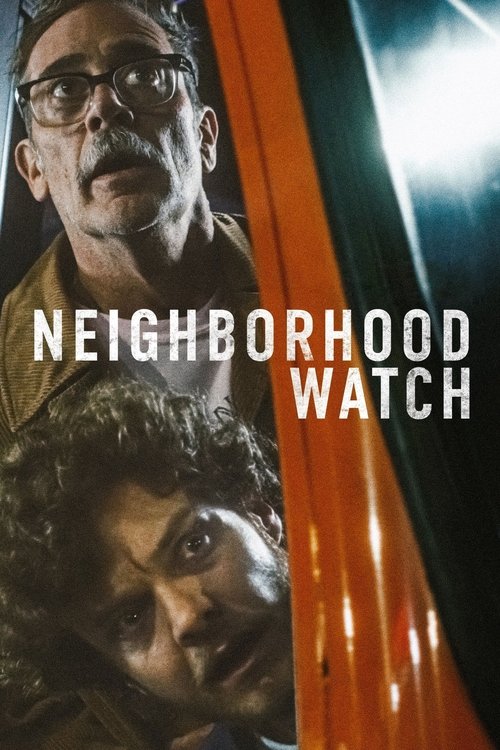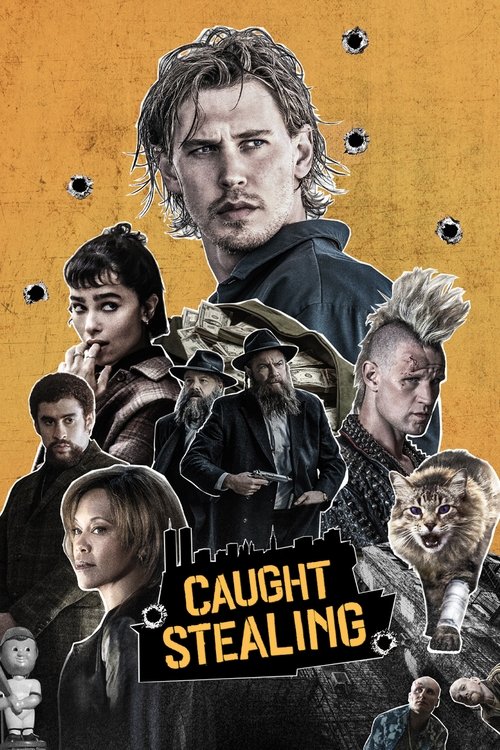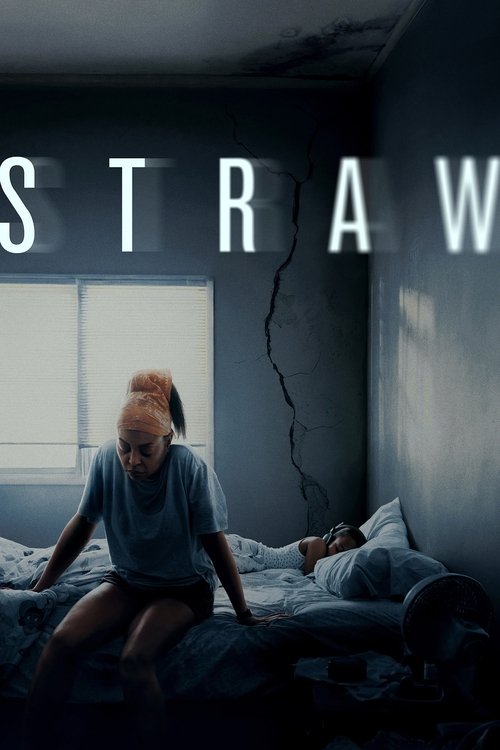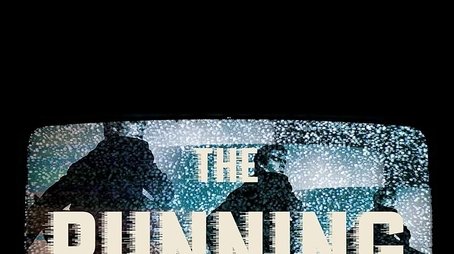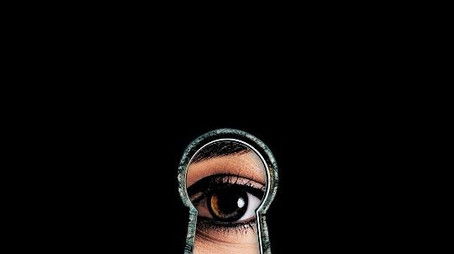
Ask Your Own Question
What is the plot?
A man named John walks through a remote Irish wood beneath a washed-out sky, moving along a narrow path that is punctuated by weathered signs reading "point of no return," each one numbered differently. He advances until an invisible force yanks him backward; no matter how he struggles, the same compulsive tug drags him away from whatever lies ahead. His trek repeats like a failed ritual, and the forest itself closes around him.
Far from that place, Mina lives in a quiet Irish town and keeps to herself. She works at a pet shop, paints to process the grief that has shadowed her since her mother's death fifteen years earlier, and carries a need to vanish from the routines of her life. When her employer asks her to deliver a parakeet called Darwin to an address without supplying a name, she seizes the chance to be someone else for a night. She hides her hair beneath a wig and gives a false name before driving into the countryside. Night gathers over the trees and her car conks out on a lane, the engine falling silent. Mina leaves the vehicle and begins walking, taking the parakeet's cage with her.
She hears rustling and sees a woman sprinting through the undergrowth. Mina chases after her and the two run until a ramshackle cabin appears, its sign naming it "The Coop." Inside, they find shelter with an older woman who calls herself Madeline and two young people, Ciara and Daniel. The newcomer looks at herself in a mirror, sensing a presence that is not purely human; applause echoes through the trees outside, a sound that seems to come from nowhere and everywhere at once. Madeline, who watches the arrivals with a practiced calm, refers to the unseen audience as "The Watchers." She speaks in measured tones about the rules to living under their attention without revealing much.
In the Coop, the trio perform normality like an act they were taught. Daniel stages little spectacles to placate the invisible crowd; Ciara, who carries the loss of her husband John and speaks of survival with blunt tenderness, offers Mina a guarded friendship. Daniel keeps his feelings for Ciara mostly to himself, watching her with the sort of devotion that poses as quiet affection. Mina, restless and curious, pushes Daniel into an exploration: they haul a rope and repel into a hole in the ground at the edge of the property, a vertical rift that opens into something below the Coop. Inside the shaft they find objects lain away: old journals, scraps of writing, and a photograph of a man identified only as "The Professor."
When the night thickens, someone knocks at the Coop's door. From outside comes the voice and face of a man who looks like John. Ciara freezes and reaches for hope, but Madeline grabs the handle and snarls a warning: The Watchers will come as familiar faces to gain entry and they will imitate those you miss. Madeline tells them bluntly not to open. They obey for a time, but terror mounts as invisible forces test them. During a violent sequence, the Watchers single out Daniel. He rushes to answer the door, believing the voice of someone he knows; the house shivers, the wood splits, and in the scramble that follows Daniel is seized by an apparition that mimics John's shape. He is dragged into the dark outside the Coop and his cries cut off; when Mina and the others force the door open the next instant, Daniel is gone and only a smear of blood marks the threshold. The Watchers' attack leaves the interior of the Coop torn and the survivors stranded in a house that is both refuge and trap.
In the fallout, Mina and Madeline pry open a hidden basement room beneath the floorboards. The space contains an archive devoted to the man in the photograph: Rory Kilmartin, a scholar and a man who called himself The Professor. Mina plays battered videotapes and watches hours of footage in which Kilmartin dissects the nature of the Watchers, displays captured artifacts, and attempts to interrogate a bound Watcher. The videos become more desperate as they progress; the camera records the Professor's slow unravelling, his voice wobbling, notes becoming frantic on the screen. The final reel shows Kilmartin alone in the basement with the captive Watcher and then cuts to footage of his death. The camera captures the moment he dies--his collapse in the room--so that Mina sees in stark detail that Kilmartin's enterprise ends in a fatal conclusion. Madeline comments in a low voice that Kilmartin paid the price for trying to reach what should have remained hidden.
Madeline explains what she knows: the Watchers are not human but fairylike creatures exiled or banished from human society; they hover at the borders between the visible and the invisible. She explains that some among them can imitate the living and slip into human lives, and she recounts events that made survival a series of rules. The archive and Madeline's words together tell of human attempts to control or communicate with the Watchers that ended in ruin. The three women decide they must leave the woods to find safety and answers. They pack what they can carry, move through the trees under a thin moon, and reach a road where a car carries them back to town.
Back in town, the three are shaken and haunted by what happened in the Coop. Mina assumes a false identity--claiming to be Rory Kilmartin's niece--so that she can access his official papers. At the archive she combs through Kilmartin's files and discovers documents that catalog experiments and describe hybrids--accounts that suggest the Watchers sometimes interbreed with humans or create beings with both heritages. The papers include notes about "halflings" and "Daywalkers," terms Kilmartin used when theorizing about creatures that could exist between day and night.
When Mina goes to Ciara's house to tell her what she has learned, she begins to notice discrepancies. Madeline's manner, her knowledge, the way she looks at the world--bits of information start to coalesce into a new, chilling possibility. Mina confronts Madeline and pieces together a final, painful truth: Madeline is not fully who she pretends to be. Kilmartin's actual wife, a woman named Madeline, died some time ago; the name and visage have been taken up by a Watcher that adopted the late wife's form to move among humans. The creature that calls itself Madeline explains nothing in words, but the implication is clear: what the survivors had thought of as an elderly protector has been, in part, something other than human.
Mina goes to Ciara again and finds in her the presence of a Daywalker--a person who has both human blood and watcher heritage. Ciara, who has described losing her husband John and living under observation, reveals the consequences of possessing dual traits: she is sometimes drawn toward the forest, sometimes repelled; she is taught by grief to be cautious. When Mina speaks to her about equality and the possibility of coexistence, Ciara listens and at one point steps back from a reaction that might have become violent. The Daywalker struggles with impulses and memory, but Mina's argument and plea cause her to restrain a hostile gesture. They leave the conversation on uncertain terms; Ciara's anger is suppressed rather than resolved.
Mina returns to her ordinary life for a time. She attends her mother's memorial and meets her twin sister, Lucy. At the service Mina tells Lucy fragments of what she has seen--the forest, the Coop, the tapes--and Lucy listens with the sort of familial steadiness that has always tethered Mina. Lucy's young sons give Mina a crayon drawing; the boys draw a house and a small figure standing at a window. After the ceremony, the siblings stand together at the living-room window and look out across the fading light. Something peers out from the gathering dusk: a face, pale and unreadable, presses close to the glass. It is the Daywalker, its eyes locked on Mina and Lucy. It leans in and looks at them for a long time before stepping back into the night, leaving the sisters unnerved and aware that the boundary between their ordinary world and the forest's secret has not closed.
Meanwhile, in Homewood, Alabama, a different strangeness plays out in a residential neighborhood. Simon McNally leaves a psychiatric hospital after nearly ten years. He carries vivid hallucinatory episodes with him and the disembodied voice of his dead father follows him, belittling and gaslighting him in moments of stress. His sister DeeDee shoulders most of the responsibility of caring for them both and for making ends meet. Simon exists in the world with a fragile hold on perception.
One afternoon Simon sees a woman assaulted at the curb and forced into a white van by a man whose face appears blurred in his vision. The voice of his father tells him that he is making things up, that reality will always be too much for him. But Simon is adamant that the assault is real. He goes to the police and reports the abduction to detective Liz Glover. She checks the license plate that Simon provides and finds the registration belongs to a car parked in a different state, hundreds of miles away. Familiar with Simon's previous violent outbursts and hospitalizations, she treats his report as likely delusional.
Refusing to be sidelined, Simon seeks help from his neighbor Ed Deerman, a recently retired campus security officer who is reluctant but sympathetic. Ed doubts at first, but he agrees to look into the case with Simon. At the department of motor vehicles they try to obtain more records from employees who are reluctant to cooperate, and a frustrated Simon reacts violently when they refuse to help. In Ed's car, a simple repeated click of his pen by Ed keeps Simon from spiraling; the motion steadies Simon and calms him. Ed uses the description Simon gives--what the woman wore--to question local sex workers about any missing women but that line of inquiry ends in Ed's car window being shattered by an angry pimp.
Despite setbacks, Ed continues. He pressures his replacement at work and obtains access via a traffic officer friend to license records that match the combination Simon remembers. Their search leads them to Kurt's Auto Salvage. At Kurt's yard they find a white van with the plates removed, a clear sign that the vehicle was operating with stolen tags. Inside the salvage yard they catch a scream and Simon rushes toward a car, convinced the woman is inside. Ed stops him, insisting he did not hear anything. Tension rises between the two men as Simon's certainty and Ed's skepticism collide.
That night, Simon and DeeDee argue about their past--about how their father's abuse left Simon abandoned and how DeeDee left him to fend for himself--and the argument rekindles old wounds. Later, the abductor attacks Ed in his own home. Simon witnesses the assault and runs over. In the struggle that follows Simon disarms the attacker; in the chaos of the fight Simon fires the attacker's weapon and the man collapses, dead from the gunshot wound. Simon cries out at what has happened. Ed and Simon take the man's phone and discover it holds only two contacts, one belonging to Kurt from the salvage yard. They go to DeeDee's workplace so she can tend to Ed's wounds. Police arrive looking for the shooter; officers question people at the scene and the trio goes on the run, boarding a bus to get away.
The next day they confront Kurt. In the office at Kurt's Auto they find a wall clock that hides a safe behind it--an identical trick to a safe Ed keeps at his own house--and inside the safe they find passports and identification documents for several different women. Among them is a passport for Anya, the woman Simon saw forced into the van. Kurt admits that the abductor is part of a sex-trafficking operation and that Anya was punished for trying to flee. He gives them the address where the trafficker keeps his captives. Ed and Simon alert the police to what they have discovered and leave the passports for detective Glover to find.
At the address they find a house that seems empty at first, but Simon suffers a breakdown when confronted with the place; the voice of his father tells him he will fail the rescue. Ed calms him by clicking his pen and by repeating small, measured commands that keep Simon's breathing even. This method works: Ed places the pen in Simon's hand so he can click it himself and find that same rhythm when panic threatens. They force their way in and search quickly. A woman moves in the house and bolts from them but in the course of looking they discover a secret door concealed behind a panel. They open it and uncover a hidden room where Anya is chained.
They free Anya and carry her out. Police officers arrive moments later, secure the scene, and take Anya to safety. Liz Glover interviews the rescued woman and, despite the extralegal force in the rescue, she permits herself a quiet commendation of Simon and Ed's instincts; she arrests Kurt for harboring evidence and facilitating trafficking. Simon and Ed are also taken into custody because of the shooting, but the arrest is procedural rather than punitive: Glover understands they acted to save a life. In the processing room Simon and Ed exchange something new--a sustained look between them that Simon had earlier been unable to hold steady; in that glance there is a fragile grounding. Simon's hands hold the clicking pen that Ed placed in his palm, and he keeps it as a reminder and a tool.
Back in Ireland, Mina reviews Kilmartin's notes and reads accounts of hybrids and of Watchers assuming human forms. She confronts Madeline again about what she discovered. Madeline admits that Kilmartin's attempts cost human lives and that some Watchers took human faces to blend in. Madeline does not offer full confession but in a private moment Mina hears something in Madeline's voice and sees how the creature studies human mourning as if learning a language it never fully speaks. Ciara's presence complicates matters further because she both mourns a husband and oscillates between restraint and the wildness associated with the forest. Mina addresses Ciara about the rights and recognition of those who are blended--those who tread between human and Watcher--and Ciara responds by checking her own temper. The Daywalker does not strike; instead she listens, withdraws from violence, and steps back from the edge of hostility.
Mina attends her mother's memorial and stands beside Lucy while family and friends give eulogies. After the service they sit in Lucy's living room, the afternoon sliding toward evening. Lucy's sons bring out a crayon drawing to show Mina. It is childish, small, and earnest. They set it on the table. Mina smiles at the drawing and then looks up at the window. The Daywalker is at the pane, her face close to the glass, her eyes steady. She remains there long enough to be seen clearly, then moves away into the dark, leaving Mina and Lucy shaken but together. The story closes with Mina and Lucy watching the night and knowing that the world their family occupies is no longer the same as it was before the parakeet's delivery, before the Coop, before the tapes; the boundary has been breached and human lives now contain traces of the Watchers' presence.
In Homewood, Simon and Ed sit in a holding cell after their arrest. Detective Glover processes the paperwork and speaks quietly to each of them about what happened. The department will treat Kurt's case and the larger trafficking ring next. For now, Simon and Ed remain in custody until the morning, when charges are sorted. Before the officers take them away to temporary cells, Simon looks at Ed and, for the first time since his release from hospital, holds another man's gaze. He clutches the clicker pen in his hand and keeps clicking it lightly, a small calmed motion that Ed taught him during the raid. They trade a haunted smile that acknowledges both the violence Simon has seen and the rescue he helped effect.
The film ends with two quiet images running parallel: in Alabama, Simon sitting on a cot in a cell, the pen in his hand and his breathing measured; in Ireland, Mina and Lucy standing at the window, the Daywalker's face still lingering at the glass. In both scenes the characters stand at the margins of a life they are trying to reclaim--Mina holding the knowledge of Watchers and hybrid archives, Simon holding the evidence of his own ability to act--and the last frame leaves each of them watching outward into spaces that remain full of danger and possibility.
What is the ending?
Short Narrative Ending: In the 2025 film "Neighborhood Watch," Simon, a mentally ill young man, believes he witnesses an abduction but is dismissed by the police. He enlists the help of his neighbor Ed, a retired security guard. Together, they embark on a quest to find the missing woman, navigating through their own personal struggles and the skepticism of others. The ending involves Simon and Ed's efforts to uncover the truth behind the abduction, culminating in a confrontation that resolves the mystery.
Expanded Narrative Ending:
The ending of "Neighborhood Watch" unfolds as Simon and Ed continue their investigation into the abduction. Despite initial skepticism and personal biases, Ed becomes more invested in helping Simon, partly due to his own sense of purposelessness after retirement. Their search leads them through various encounters with local figures, including sex workers and potential suspects, which often result in misunderstandings and setbacks.
As they delve deeper, Simon's mental state becomes increasingly unstable, with his hallucinations and the voice of his deceased father intensifying. This internal conflict makes it difficult for him to distinguish reality from delusion, complicating their investigation. Ed, while initially dismissive, begins to see Simon's determination and starts to believe in his story, recognizing the sincerity behind his claims.
The climax of the film involves a confrontation with the actual perpetrator of the abduction. Simon and Ed, through a combination of Ed's security experience and Simon's observations, manage to track down the kidnapper. The confrontation is tense, reflecting the desperation and urgency of their mission.
In the aftermath, the mystery of the abduction is resolved, and the missing woman is found. Simon's journey not only helps him find closure but also begins to heal his mental scars. Ed, too, finds a new sense of purpose in helping Simon, which helps him overcome his bitterness and feelings of uselessness.
The fate of the main characters is as follows: Simon, having found some resolution to the abduction mystery, begins to rebuild his life and confront his mental health challenges more effectively. Ed, having found a new purpose in helping Simon, starts to move past his retirement blues. The missing woman is rescued, bringing closure to the central plot of the film. The ending emphasizes themes of redemption, friendship, and the power of believing in others despite their flaws.
Is there a post-credit scene?
The 2025 film "Neighborhood Watch" does not appear to have any information available about a post-credit scene in the search results. The detailed plot summary and ending explanations focus on the main story and its resolution, particularly highlighting how the protagonist Simon McNally successfully helps rescue a kidnapped woman but is arrested for unintentional murder, with an optimistic tone about his future. No references or mentions of a post-credit scene are found in the available sources, including IMDb and movie reviews. Therefore, it is likely that the movie does not include a post-credit scene or it has not been publicly documented.
What mental health challenges does the main character Simon face in Neighborhood Watch (2025)?
Simon McNally, the main character, suffers from paranoid schizophrenia and experiences vivid hallucinations, including hearing the disembodied voice of his abusive, deceased father who belittles him. His mental illness has severely impacted his ability to function in daily life and maintain employment, leading to a decade-long hospitalization and dependence on his sister for support.
How does Simon's relationship with his neighbor Ed develop throughout the story?
Initially skeptical and reluctant, Ed Deerman, a retired campus security guard, agrees to help Simon investigate the alleged kidnapping Simon witnessed. Despite doubts about Simon's reliability due to his mental illness, Ed gradually becomes a supportive ally. Their partnership evolves from mistrust to friendship, culminating in Ed taking pity on Simon and rejoining him in the search, and later standing by him during dangerous confrontations.
What obstacles do Simon and Ed face while trying to find the kidnapped woman?
Simon and Ed encounter several challenges: the police dismiss Simon's claims as delusions; Ed's attempt to obtain information from the DMV is refused, leading to Simon's violent outburst; questioning local sex workers results in Ed's car being vandalized by their pimp; and they face threats from the kidnappers, including an attempt on Ed's life by one of the perpetrators.
How is Simon's perception of reality portrayed in the film?
Simon struggles to distinguish between hallucinations and reality due to his schizophrenia. He is haunted by his father's voice telling him he is hallucinating and too weak to help. However, the film reveals that Simon's witnessing of the kidnapping is real, challenging both the characters' and audience's doubts about his reliability and highlighting his courage despite his mental health struggles.
What is the significance of Simon's actions by the end of Neighborhood Watch (2025)?
By the film's end, Simon's brave actions lead to the rescue of the kidnapped woman and the capture or death of the perpetrators. Although he unintentionally kills one intruder and is arrested, he is likely to face minimal charges due to self-defense. Importantly, Simon gains validation and appreciation from Ed, Detective Glover, and the rescued woman, which contributes to his emotional healing and sense of being understood.
Is this family friendly?
The 2025 movie Neighborhood Watch is not family friendly; it is rated R due to language, some violence, and bloody images.
Potentially objectionable or upsetting aspects for children or sensitive viewers include:
- Violence and bloody scenes, likely related to crime and abduction themes.
- Strong language throughout the film.
- Psychological themes involving mental illness, including portrayal of paranoid schizophrenia, which may be intense or unsettling.
- The story involves kidnapping and human trafficking, which are mature and potentially disturbing subjects.
These elements make the film more suitable for mature audiences rather than children or sensitive viewers.
Does the dog die?
Based on available sources, there is no evidence that a dog dies in the 2025 film Neighborhood Watch. The plot centers on Simon McNally, a young man with paranoid schizophrenia, who believes he witnesses the abduction of a young woman. The narrative follows Simon's desperate attempts to be taken seriously by the police, his fraught relationship with his sister DeeDee, and his uneasy alliance with his neighbor Ed Deerman, a retired security guard. The film's tension arises from Simon's unreliable perception, his internal struggle with his father's haunting voice, and the growing urgency to find the missing woman.
Key scenes include Simon's violent outburst at the DMV, Ed's skeptical but ultimately compassionate involvement, and their investigation into local sex workers--a sequence that ends with Ed's car being vandalized, but no mention of animal harm. The emotional core of the story is Simon's isolation and determination, Ed's reluctant empathy, and the community's dismissal of Simon due to his mental illness. There are no plot points, character arcs, or described scenes involving the death or harm of a dog. Crowdsourced databases that track animal deaths in films also do not report any such event for this movie.
In summary, a dog does not die in Neighborhood Watch (2025), and animal harm is not part of the film's narrative or emotional landscape.

